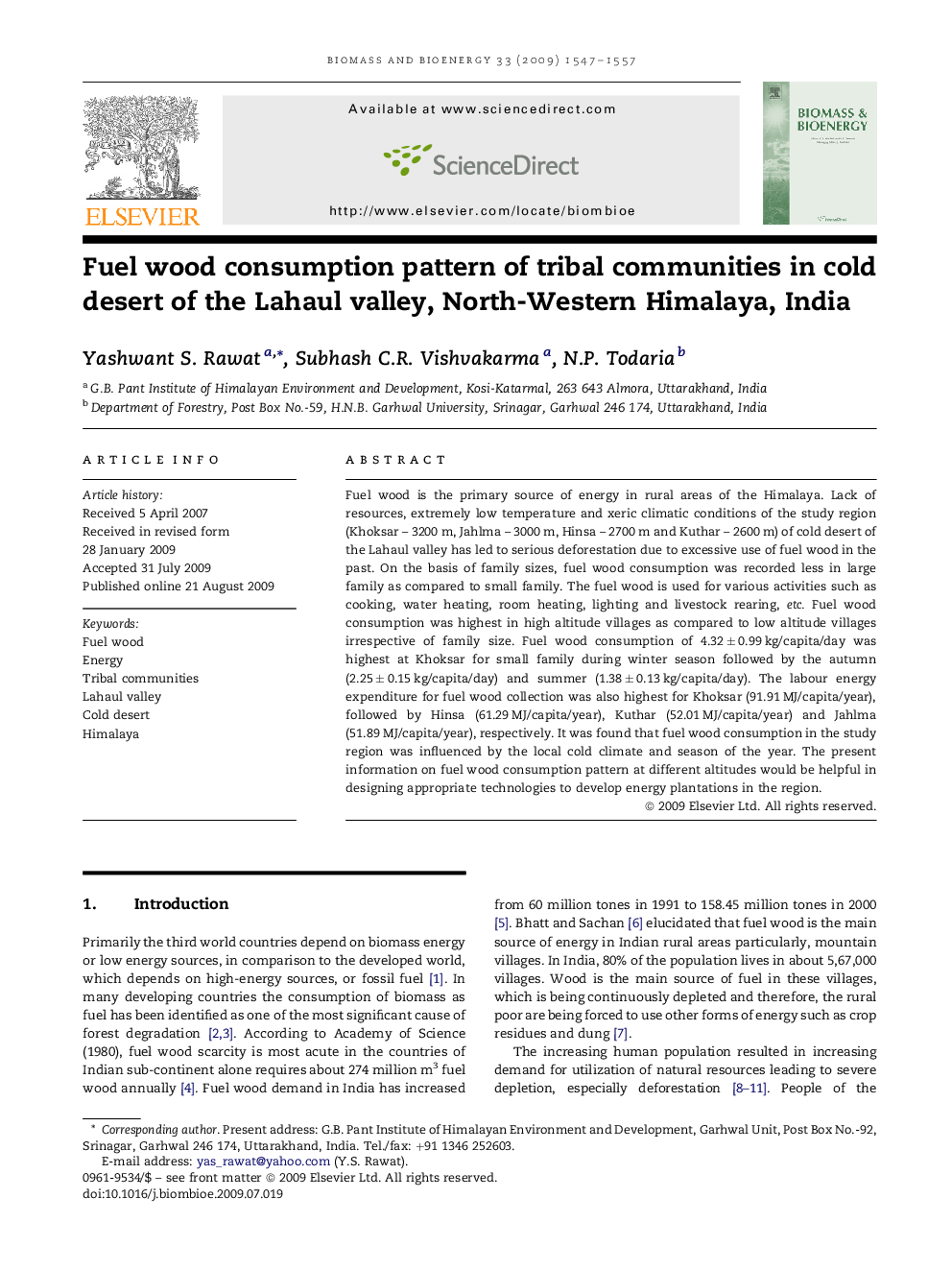| Article ID | Journal | Published Year | Pages | File Type |
|---|---|---|---|---|
| 678473 | Biomass and Bioenergy | 2009 | 11 Pages |
Fuel wood is the primary source of energy in rural areas of the Himalaya. Lack of resources, extremely low temperature and xeric climatic conditions of the study region (Khoksar – 3200 m, Jahlma – 3000 m, Hinsa – 2700 m and Kuthar – 2600 m) of cold desert of the Lahaul valley has led to serious deforestation due to excessive use of fuel wood in the past. On the basis of family sizes, fuel wood consumption was recorded less in large family as compared to small family. The fuel wood is used for various activities such as cooking, water heating, room heating, lighting and livestock rearing, etc. Fuel wood consumption was highest in high altitude villages as compared to low altitude villages irrespective of family size. Fuel wood consumption of 4.32 ± 0.99 kg/capita/day was highest at Khoksar for small family during winter season followed by the autumn (2.25 ± 0.15 kg/capita/day) and summer (1.38 ± 0.13 kg/capita/day). The labour energy expenditure for fuel wood collection was also highest for Khoksar (91.91 MJ/capita/year), followed by Hinsa (61.29 MJ/capita/year), Kuthar (52.01 MJ/capita/year) and Jahlma (51.89 MJ/capita/year), respectively. It was found that fuel wood consumption in the study region was influenced by the local cold climate and season of the year. The present information on fuel wood consumption pattern at different altitudes would be helpful in designing appropriate technologies to develop energy plantations in the region.
